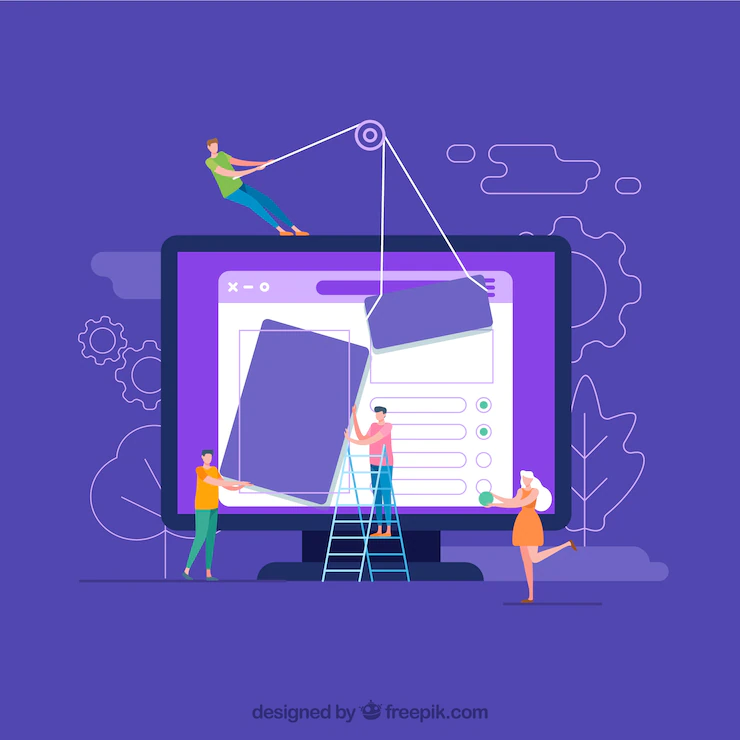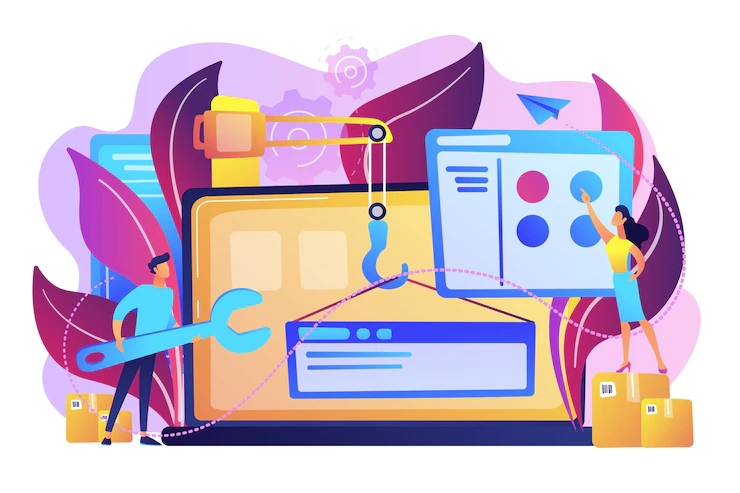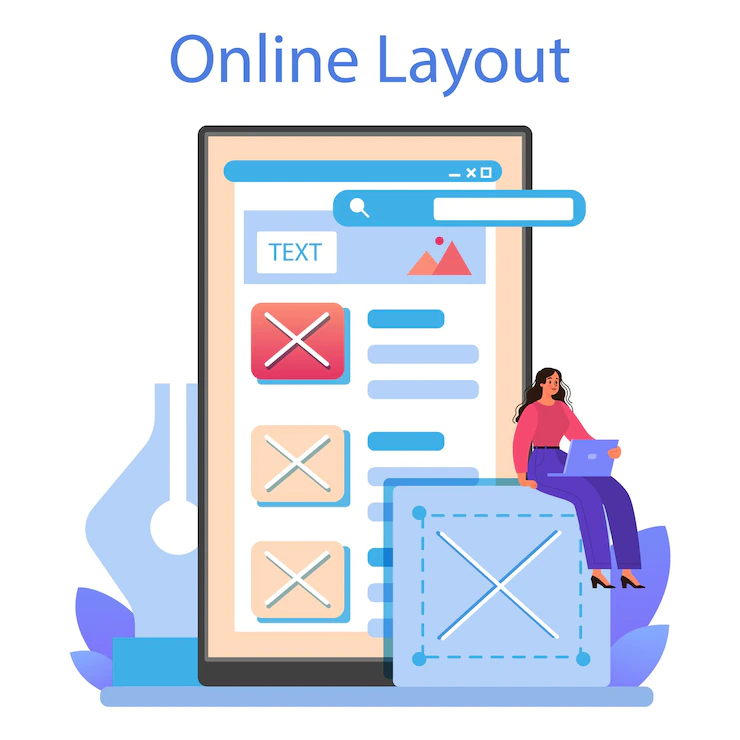Building A Web App Prototype
Building prototypes is a vital stage in the product development lifecycle. It gets more beneficial when dealing with digital products – you wish to showcase how a web or mobile app performs its intended purpose. Some digital products are expensive to develop, requiring developers to source funds from investors. Such developers must build web app prototypes for pitching.
Are there any similarities between a web app prototype and a mobile app prototype? Can developers use the same tools to create prototypes for iOS app development and web apps? This article highlights the benefits of prototypes, different types of app prototypes and prototyping tools.

Prototyping is a vital phase in the web app development process
What is a web app prototype?
Modern businesses understand the value attached to web and mobile applications. Companies leverage cross-platform app development, web app development, and native mobile app development to manage routine business needs. The popularity of web apps is reshaping customer experiences, and developers have a big task of ensuring remarkable user experiences. Unlike Android app development, web app development focuses on similar user experiences across devices and platforms as opposed to a specific operating system.
A web app prototype is a model used to visualize the functionality, UI UX design and compatibility of proposed web applications before release. Developers use these prototypes to evaluate a product’s fit for use. The model showcases the unique features of the web app, allowing developers and selected third-party testers to explore functionality and usability. Developers use a web app prototype to collect sufficient feedback from a sample target audience. The feedback enables these teams to adjust UI UX designs, back-end coding and other features to maximize web app performance.
Use prototyping tools to organize user interfaces
Developers can leverage several variations of a web app prototype – it can be a simple UI mocking, clickable prototype or interactive prototype with functional navigation buttons and a partially developed back-end. Developers create a web app prototype after completing wireframe development to decide on the most reliable web app blueprint. There are several ways to build a web app prototype depending on what message the developer intends to pass. A low-fidelity prototype facilitates concept testing and is simpler and less expensive to create. High-fidelity prototypes are more complex and contain detailed information about the web app, facilitating more user interactions.
Benefits of building a web app prototype
Building web app prototypes requires substantial budgetary allocations and lengthy work schedules. Why should developers bother to build prototypes? Why not focus their skills and energy to create a functional product? Prototyping helps developers navigate complex web app development challenges. It also helps in refining the functionality of the final product. Some benefits of prototyping are:
- Developers can identify design defects early. They can compare how different interactive app designs impact user experiences. They can also unearth hidden app development bottlenecks and brainstorm suitable alternatives to guarantee timely project deliveries.
- Web app prototypes are vital for feedback collection. Target audiences may have different app preferences for developers. By releasing a mockup, target customers can identify problematic app features and deficient UI designs and propose changes to maximize user experiences.
- Web app prototypes improve collaboration between developers, stakeholders and customers. They communicate complex details in a simplified way. Investors learn how the product will yield returns for their investment while customers get a feel of the web app. It makes it easier for developers to implement changes and for stakeholders to track and evaluate the impacts of those changes.
How to make an app prototype
Developers approach prototyping differently. Some prefer using low-fidelity prototypes since they are fast and cheap to create. However, they can showcase limited web app features. High-fidelity prototypes require advanced tools to develop. Either way, the developer should evaluate what concepts or ideas they wish to test. A developer can choose to:
- Create a front-end prototype – this showcases the user interfaces (UI). The developer uses UI prototyping tools to create and compare several app layouts. The front-end prototype focuses on web app appearances. It shows target customers how different app features will be organized on the screen. The UI prototype may contain clickable components to simulate customer requests.
- Build a back-end prototype – this is a more complex procedure that may require significant coding skills. The developer works with an approved user interface when building a back-end prototype. Prototypes in this category are vital for showcasing how advanced app features work. The developer does not have to incorporate full functionality in the prototype. They can leverage dummy data for visualization and demonstrational purposes.
The typical prototyping process involves:
- Creating a basic structure for the web app
- Optimizing application layouts (using UI prototyping tools)
- Develop a demonstrational back-end code
- Source demonstrational data for the initial simulation
- Style the web app to reflect market requirements
- Test the prototype
- Incorporate feedback in subsequent designs
Tools for creating web app prototypes
Building a web prototype eases things up as the developer moves to idea implementation. That explains why an individual developer or experienced prototype development company should fine-tune product mockups. Developers can leverage different prototyping tools and frameworks to streamline workflows and maximize productivity when creating a web app prototype. Several tools are available for prototyping a web application, and the tool chosen should address specific needs and goals. Some tools are quick and easy to use for creating prototypes. Developers can create simple mockups using drag-and-drop prototyping tools.

Several prototyping tools exist in the market
Here is a look at the different UI UX prototyping tools developers can use to showcase web app functionalities. Some of these tools are useful for prototyping cross-platform and mobile apps.
Adobe XD
This is one of the most flexible prototyping tools enabling web app developers to create dynamic prototypes. Adobe XD contains multiple tools suitable for creating interactive prototypes using a vector-based design system. The prototyping tool allows developers to resize different UI components and reshape them to achieve desired layouts.
Adobe XD is a cloud-based prototyping tool capable of working collaboratively with multiple Adobe applications. It means developers can utilize this tool to create UI and UX designs. Since this is a cloud-based solution, developers can collaborate from remote locations and track changes concurrently. Developers use inbuilt tool features to create animated web app transitions and simulate different prototype designs.
Origami Studio
This prototyping tool is behind the success of Facebook, a popular social networking web application. It is an advanced tool containing several inbuilt tools and a Patch Editor used to build interactive web app prototypes. Developers can easily compare interactions between different app features and conduct several iterations to create the most suitable high-fidelity app prototype. Developers can track app changes in real time. Being a flexible prototyping tool, it has proven beneficial for web, iOS and Android app development. This tool allows developers to import design features from third-party prototyping tools like Sketch.
Justinmind
Justinmind is a tool containing templates that developers can simply drag and drop to build functional app prototypes. It is a versatile tool that enables inexperienced developers to manage wireframe development and transition to full-scale app prototypes. One can customize inbuilt libraries for reuse, expediting prototyping. One can create prototype animations and test transitions between different app sections or functionalities.
This tool integrates with several prototyping tools. These integrations are vital for simplifying workflows and optimizing app features by combining multiple libraries and inbuilt design templates.
Sketch
Sketch is a reliable UX prototyping tool containing reusable design elements required to create high-fidelity prototypes. The framework automates some design tasks and changes layout sizes depending on the number of active components. Sketch provides developers with several design tools and shortcuts crucial for simplifying the design process. Fresh designers can easily learn and use Sketch to create their first prototypes.
Marvel
Marvel is a tool for developers to convert web app mockups to interactive prototype designs. It allows developers to build realistically looking prototypes to give testers an actual feel of the proposed digital product. Developers can leverage Marvel’s inbuilt tools to convert app code into website code, enabling developers to create matching websites. Marvel integrates with other prototyping tools like Photoshop, making it easier for developers to customize app layouts.
Marvel is an easy-to-use tool and does not require extensive coding experience. It also permits remote collaborations among different team members.
Proto.io
It is a no-code prototyping tool with various design tools required for building interactive web app prototypes. It contains several in-built templates that developers drag and drop to design user interfaces and visualize app layouts. Developers can create several iterations and mix various design components to achieve the most suitable user interfaces reflecting brands.
Final Thoughts
Building prototypes is a vital phase in the app development process. Developers use different strategies to design and actualize product mockups. Getting everything right at the prototyping stage improves accuracy and reduces costs associated with subsequent app development processes. Developers can create low and high-fidelity prototypes depending on what they intend to showcase or test. Developers should carefully select the right prototyping tools to ensure the process takes a shorter time. Use the prototype to test app functionality and collect sufficient feedback from testers to enhance the performance of the end product.

